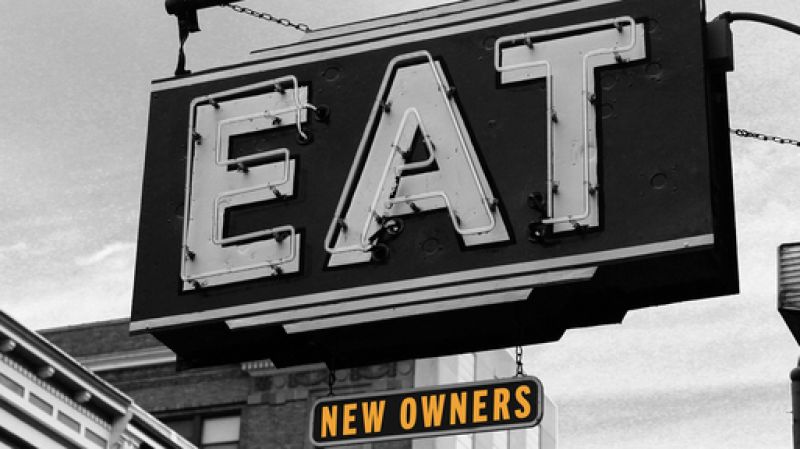Do "Under New Management" Signs Really Work?
Reminding customers of an ownership change is an old retail standard. But researchers wondered about its effectiveness

Google “under new management sign” and you’ll get thousands of options for buying decals, signs and stock photos of the phrase. Clearly, there’s a market for announcing a managerial change to the world. But should there be? Do these signs actually bring people in the door?
Smith School of Business PhD grad Tim Jones had the same questions. “You drive around and you see these signs all the time, and my thought was always, ‘Why would you want to do that?’ For me, they only raised questions about why they’re under new management and whether I should go in there at all now.”
So Jones, who is now an associate professor of marketing and strategy at Memorial University, started looking into it. Peter Dacin, Kraft Professor of Marketing at Smith, joined him, along with Susan Myrden, associate professor of marketing at the University of Maine.
In particular, they wanted to figure out how consumers judge the quality and reputation of businesses that put up “under new management” (UNM) signs. To do so, they devised two experiments that examined the impact of the signs on visitors to fine-dining and fast-food restaurants.
Their hunch was that, in most cases, under new management signs would either lower visitors’ perceptions of quality or reputation or have no impact. (Spoiler alert: They were mostly right.) Their findings were published in a Journal of Services Marketing paper.
The experiments
The researchers looked at fast-food and fine-dining restaurants for two reasons. One, because consumers are generally familiar with both. And two, because the impact of a management change would, theoretically, be quite different for each.
“We figured that management would make a difference in fine dining because there is a lot of interaction with customers and the experience there can depend on managerial choices. Not so much in fast food, because the fast-food experience is so standardized,” says Jones. “So, our big question was: Do UNM signs matter when management matters and when it doesn’t?”
In the first experiment, they studied the influence of UNM signs on perceptions of quality and reputation when participants had no prior experience with the restaurants. In the second, they looked at the impact of UNM signs when participants did have prior experience with the restaurants.
In both experiments, participants were first presented with photos of either fast-food or fine-dining restaurants. Then they were asked to imagine scenarios where they were looking for somewhere to eat and saw either restaurant type with a UNM sign out front. Finally, they were asked a series of questions about how they judged the quality and reputation of the restaurants.
The findings
It turns out, the researchers’ hunch was mostly correct. In almost every scenario, the UNM signs had either a negative impact on consumer perceptions of quality and reputation or no impact at all. That held true whether participants had a prior experience with the restaurants or not.
When participants had no prior experience, UNM signs did not affect perceptions of quality for fast-food restaurants. For fine-dining restaurants, they had a negative impact on quality.
When participants did have prior experience, UNM signs again did not affect perceptions of quality for fast-food restaurants. For fine-dining restaurants, they had no impact on quality when participants had a prior positive experience there.
The only scenario where the UNM sign elevated perceptions of quality was when participants had a negative prior experience with a fine-dining restaurant. “This kind of makes sense,” Jones says. “Management can make a big impact when you’re at a fine-dining restaurant, so when there’s been a change after you had a bad experience, you could be right in assuming quality will improve.”
One of the most interesting findings, says Jones, was that UNM signs lowered perceptions of reputation. “I think that goes to the fact that consumers don’t like change. If something’s changing management all the time, consumers don’t like that—and it affects your reputation.”
The takeaways
Although the studies were limited to the restaurant industry, the results could apply to a wide range of businesses with either so-called “search” and “experiential” attributes, says Jones.
Search services, such as fast-food restaurants, are usually highly standardized and consumers often have clear expectations about the quality of service they will receive. With experiential services, however, such as fine-dining restaurants, consumers have fewer clearly formed expectations.
This research shows that if a business is high in experiential attributes and relies on attracting new customers on a regular basis, a UNM sign will likely have negative effects on perceived quality and reputation. But, if the same type of business has a history of poor service, then it should probably announce that management change.
For businesses high in search attributes or that have a history of providing good service, UNM signs will likely have little to no effect on perceived quality and negative effects on reputation.
So, when should UNM signs be used? Very rarely, says Jones.
“If you’re buying a new business, your ego tends you to want to put up an under new management sign because it makes you feel better. But you should think about the longer-term implications for consumers from self-serving signals like those. This research says that in a lot of conditions that’s not the best choice to make.”